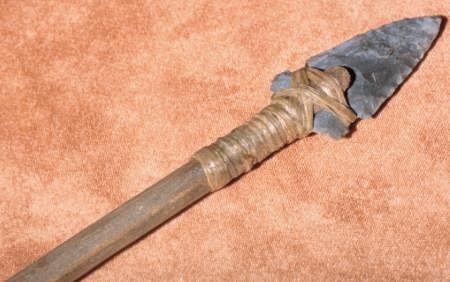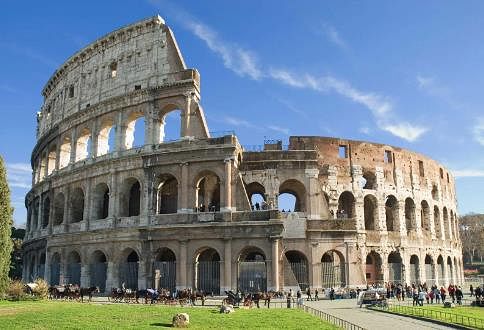Class 3 Exam > Class 3 Tests > Social Science Olympiad for Class 3 > Test: Our Ancestors-Early life and Civilization - 2 - Class 3 MCQ
Test: Our Ancestors-Early life and Civilization - 2 - Class 3 MCQ
Test Description
10 Questions MCQ Test Social Science Olympiad for Class 3 - Test: Our Ancestors-Early life and Civilization - 2
Test: Our Ancestors-Early life and Civilization - 2 for Class 3 2025 is part of Social Science Olympiad for Class 3 preparation. The Test: Our Ancestors-Early life and Civilization - 2 questions and answers have been
prepared according to the Class 3 exam syllabus.The Test: Our Ancestors-Early life and Civilization - 2 MCQs are made for Class 3 2025 Exam. Find important
definitions, questions, notes, meanings, examples, exercises, MCQs and online tests for Test: Our Ancestors-Early life and Civilization - 2 below.
Solutions of Test: Our Ancestors-Early life and Civilization - 2 questions in English are available as part of our Social Science Olympiad for Class 3 for Class 3 & Test: Our Ancestors-Early life and Civilization - 2 solutions in
Hindi for Social Science Olympiad for Class 3 course. Download more important topics, notes, lectures and mock
test series for Class 3 Exam by signing up for free. Attempt Test: Our Ancestors-Early life and Civilization - 2 | 10 questions in 10 minutes | Mock test for Class 3 preparation | Free important questions MCQ to study Social Science Olympiad for Class 3 for Class 3 Exam | Download free PDF with solutions
Test: Our Ancestors-Early life and Civilization - 2 - Question 1
The ancient city of Petra, known for its rock-cut architecture, is situated in which present-day country?
Detailed Solution for Test: Our Ancestors-Early life and Civilization - 2 - Question 1
Test: Our Ancestors-Early life and Civilization - 2 - Question 2
Who is credited with laying the foundations of Western philosophy?
Detailed Solution for Test: Our Ancestors-Early life and Civilization - 2 - Question 2
Test: Our Ancestors-Early life and Civilization - 2 - Question 3
The ancient Silk Road connected which two ancient civilizations through trade routes?
Detailed Solution for Test: Our Ancestors-Early life and Civilization - 2 - Question 3
Test: Our Ancestors-Early life and Civilization - 2 - Question 4
Identify the weapon commonly used by early humans.

Detailed Solution for Test: Our Ancestors-Early life and Civilization - 2 - Question 4
Test: Our Ancestors-Early life and Civilization - 2 - Question 5
The Maurya and Gupta Empires flourished in which present-day country?
Detailed Solution for Test: Our Ancestors-Early life and Civilization - 2 - Question 5
Test: Our Ancestors-Early life and Civilization - 2 - Question 6
Which ancient civilization is known for its advanced knowledge of astronomy and mathematics?
Detailed Solution for Test: Our Ancestors-Early life and Civilization - 2 - Question 6
Test: Our Ancestors-Early life and Civilization - 2 - Question 7
Which scripture is included in the ancient Indian epic, "Mahabharata"?
Detailed Solution for Test: Our Ancestors-Early life and Civilization - 2 - Question 7
Test: Our Ancestors-Early life and Civilization - 2 - Question 8
The ancient Chinese philosopher who emphasized moral and ethical behavior in personal and political life is ___________.
Detailed Solution for Test: Our Ancestors-Early life and Civilization - 2 - Question 8
Test: Our Ancestors-Early life and Civilization - 2 - Question 9
Identify as one of the Seven Wonders of the Ancient World?

Detailed Solution for Test: Our Ancestors-Early life and Civilization - 2 - Question 9
Test: Our Ancestors-Early life and Civilization - 2 - Question 10
The ancient civilization that developed the calendar based on a 365-day year is __________.
Detailed Solution for Test: Our Ancestors-Early life and Civilization - 2 - Question 10
|
15 videos|10 docs|27 tests
|
Information about Test: Our Ancestors-Early life and Civilization - 2 Page
In this test you can find the Exam questions for Test: Our Ancestors-Early life and Civilization - 2 solved & explained in the simplest way possible.
Besides giving Questions and answers for Test: Our Ancestors-Early life and Civilization - 2, EduRev gives you an ample number of Online tests for practice




















